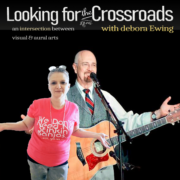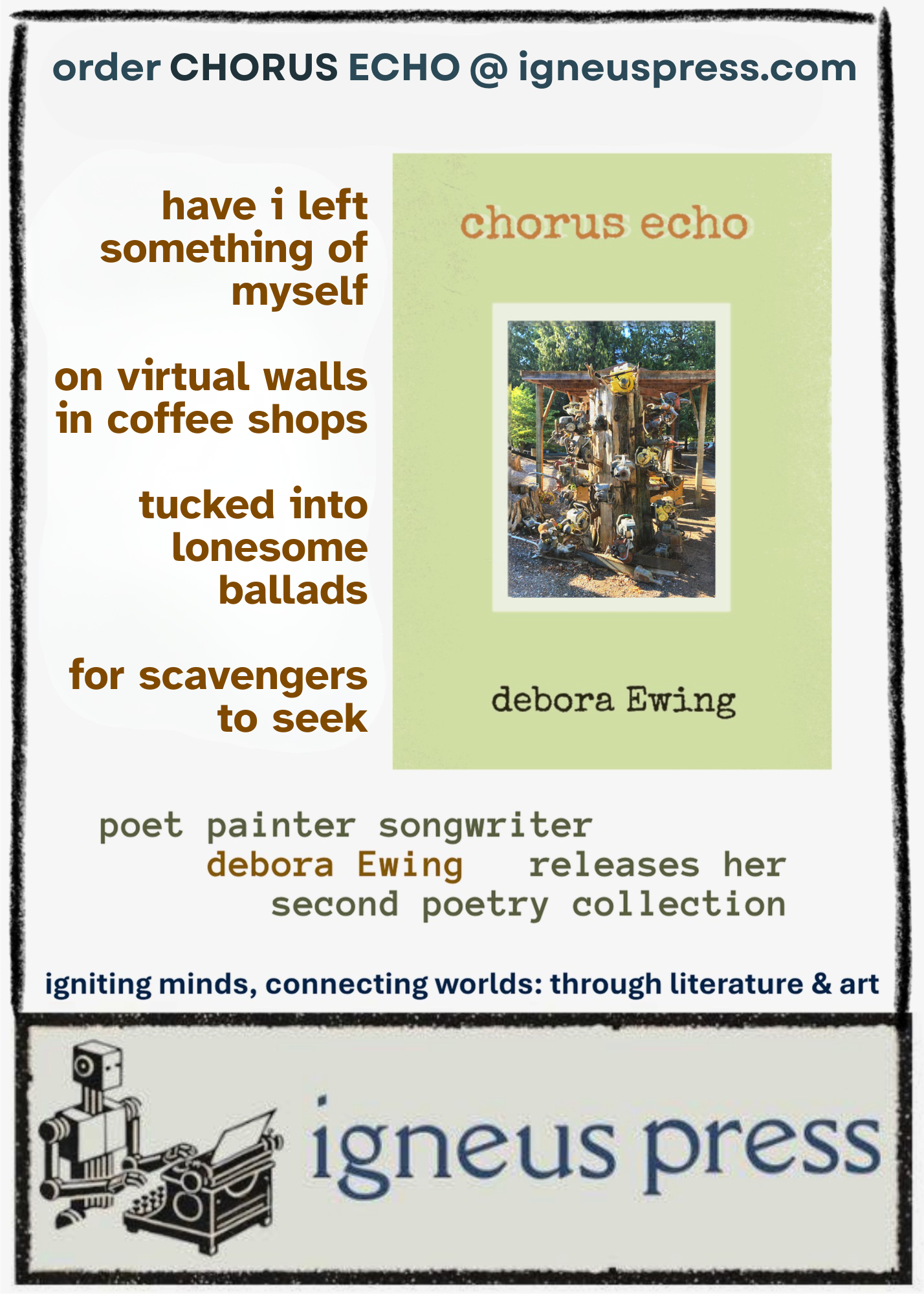James Lee Stanley and the Oil Apple
NUMBER 34 - Practicing One Thing is Practicing Everything
April 2025
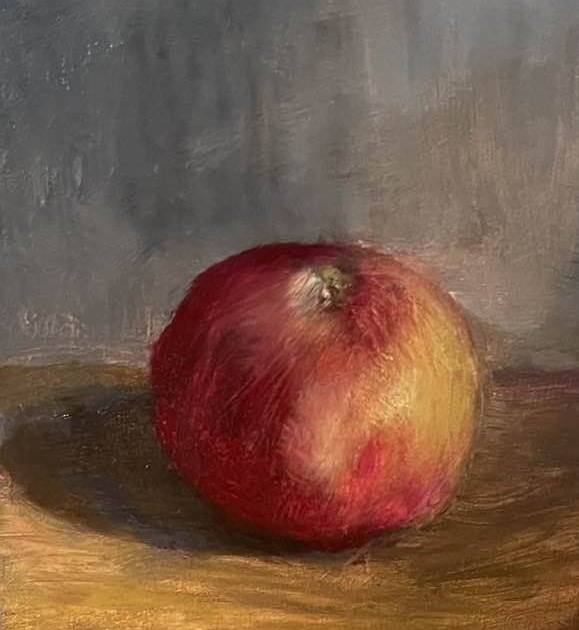
apple by James Lee Stanley
James Lee Stanley is perhaps best known for his “All Wood” series of albums: imaginative acoustic collaborations on classic rock covers, like All Wood and Stones with John Batdorf or All Wood and Doors with Cliff Eberhardt. My personal favorite is All Wood and Led: a collaboration on Led Zeppelin songs with Dan Navarro. You never imagined “Rock and Roll” like this.
But that’s not quite right: JLS is best known for being a great guy. That’s what people will tell you. He has 37 albums under his belt, most recently The Day Today, what people are referring to as James Lee’s “White Album.” His website, jamesleestanley.com, rambles from deep philosophy to Deep Space 9, satisfying for a curious mind to discover. As you’re about to learn, he’s proficient in just about anything chooses to undertake. This time it was oil painting.
me: So what made you decide that this painting class was the thing you needed to do right now?
JLS: Well, to tell you the truth, my wife publishes Tehachapi Living Magazine here In Bear Valley Springs, and she interviewed this woman, Pam Phillips, and I saw some of her artwork. Her artwork was unbelievable. I mean, she has Old Master technique. And I found out she lives like a half a mile up the road and offered lessons.
I just thought it would be fun – I’m not interested in being a realist painter, but I really needed something that would get me out of thinking about the orange turd and the apartheid mofo from South Africa who’s trying to screw our entire world. And I mostly admit for three hours a week while I’m painting, I don’t think about that son of a bitch.
me: It seems to make sense that you’d go for painting because of your philosophy: Practicing one thing is practicing everything. Do you find that applies to the painting?
JLS: Yeah. I think that once you allow your creative juices to flow… I think that most people are discouraged from letting their creative juices flow, and I was always blessed to be encouraged in any direction. So I’m not afraid to try something and I’m not afraid to be bad at it.
me: I think there’s benefit to being bad at something, and I highly encourage people to just retain one thing that you’re really bad at that you enjoy doing. For me, it’s shooting pool. I’m terrible, but it’s fun.
JLS: Yeah, me too.
me: I think that, like you’re saying – you were looking for some respite from your mind and frustration with the current situation – I think taking on something that you haven’t done before is a really great way to go about that.
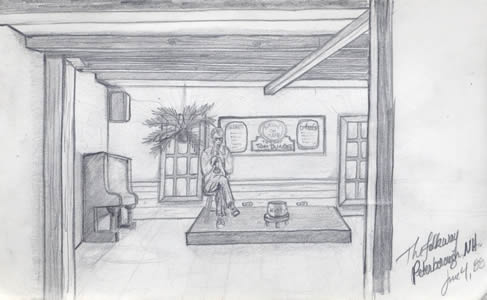
The Folkway, sketch by James Lee Stanley
JLS: Well, I’ve actually always been artistic. I’ve always drawn and painted; on my website, I think there’s a page of just sketches that I’ve done. I never did oils before, but I painted in watercolors and I have a plein air kit that I use sometimes and do acrylic.
When I was a kid, I thought I was going to leave Pennsylvania and go work for Walt Disney and draw for him, because even as a 10-year-old, I could draw exact replicas of all of the cartoon characters. So I’ve always had that thing. But then when I was 12, my uncle gave me ukulele and I found that I fell right into it. And I got a guitar at 14 and now I’m 78, so we’re talking 64 years of playing the guitar, and I play it every day for a couple of hours. I really love it.
me: That is excellent. How often do you draw still?
JLS: I have a sketch pad in the car, and I carry one when I’m on the road, when I’m flying anywhere. And I study Spanish AN hour a day. So frequently, when I get to the airports, I just do Spanish lessons while waiting to get on the plane, but I do like to sketch.
I’ve just been doing all this stuff for years. I also did wood carving, and I’m also a really good carpenter. I built the garden shed on our house.
I’m not afraid to try anything. I’ve noticed that if I do it slowly enough, I can do anything that anybody’s ever done. I mean, a real carpenter could have put that garden shed together probably in a day or two. It took me about three weeks. I had to measure six times and make sure everything was right, you know what I mean? I just go really slowly when I dunno how to do it.
me: You’re paying attention to the details.
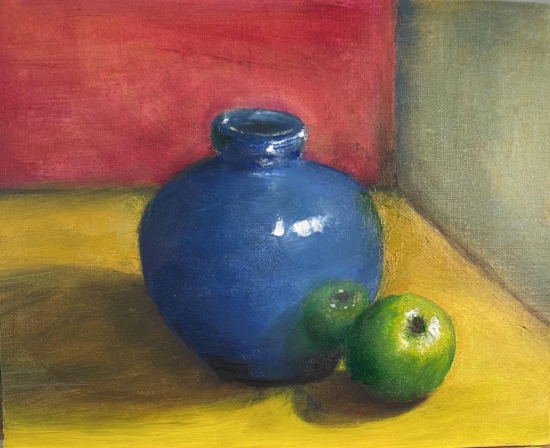
Blue Vase with Apple, James Lee Stanley
JLS: And to get back to painting, dig this: That painting that you saw was after the first lesson. I realized she said, “paint this apple.” So I looked at the apple, then just went to the canvas and painted an apple.
She came over and she said, “Well, James, that’s interesting, but it doesn’t look anything like the apple that I put in front of you.”
And I looked and I realized I didn’t even try to capture the apple. I just looked at it, said it’s an apple, and then I drew one. You know what I mean?
She said, “You have to look at the subject more than you look at the painting.” So I started noticing the proportions: where the shadow was on the apple and where the light was. I just slowed down the way I looked at it, and I’m telling you, inside of an hour, it was an epiphany because I painted that apple and it looks terrific.
me: It does look terrific. I really enjoy just looking at that apple. It’s got character.
JLS: Yeah, it does. I was thinking, I want to paint interesting things. I don’t want to paint an apple. And then I realized that what still life is, is it’s an exercise in observation and control and chiaroscuro. It doesn’t matter what you paint, what you’re trying to do is learn to observe and then translate that observation onto a canvas.
me: You caught me at chiaroscuro. I’d like to think of light and dark as a vocabulary, in the way they interact. There are messages in there, and those are the things that I try to capture in my scratchboard work, which is straight up black and white. It’s something like a sculpting process.
JLS: It’s also very unforgiving. The thing I like about oil is that it’s really forgiving.
(me, in my mind: I did not expect to hear that.)
me: I’m afraid of oil painting. The few times that I’ve worked with oil, I ended up that color you get when you mix all your Play-Doh together. I like acrylic because acrylic is forgiving. You can wash it off and do it again.
JLS: But that’s the same thing with oil. when I painted this apple, I realized I had the wrong shape. I simply took a cloth and I rubbed where away wrong the apple down to the canvas and I started again. Also use my fingers a lot. I used my fingers good to smear it around. And I don’t know, I thought it was much easier than acrylics. They dry so fast.
me: I want to look at the apple again. I thought I saw some of the texture seems to have been created from maybe the brush.
JLS: Definitely. I used the brush and I told you she’s a realist. She wanted me to keep painting it until it looked like a photograph. I said, “I’ll tell you the truth. I’m here to learn how you blend colors and how you observe light and darkness, but I think this painting is done. The way it looks right now is the way I like it to look, so I’m just going to stop.”
And she said okay.
me: That’s a special talent in art, knowing when it’s time to stop. In fact, I had a conversation with a fellow painter who says, “You need the shoulder guy – your friend that taps you on the shoulder and says, just stop screwing with it. Now.”
JLS: The trick with painting – what makes you unique and individual as a painter – is this, you look at something that is in three dimensions, and then you take it into you and change it into two dimensions. When you take a photograph, the camera turns it into two dimensions, and so you don’t, it doesn’t go through you to turn it into two dimensions. Your style shows up. You see what I mean? Your uniqueness shows up in the way. You have changed three dimensions to two dimensions.
me: Oh, you’re the filter. Yeah!
JLS: Something else just occurred to me. This painting I did, the apple I did in one three hour, actually, because the woman knocked my keys behind a cabinet but didn’t know it. So I spent the first hour and a half looking for the keys to my car, and then the last hour and a half is I painted that painting. In an hour and a half.
I was thinking that you don’t have to finish a painting in an hour and a half. You can keep working on it for weeks.
My friend John, who painted the cover of one of my albums: He’s 80 years old; been painting his whole life. And he said, “When I realized that I didn’t have to please anybody but myself, myself, it was a challenge. I thought, wait a minute, what do I want to paint now that I can do anything I want?”
And I realized that my entire life, musically, I’ve been doing whatever I wanted. I got a deal with RCA, made three albums for them in 18 months, lost my wife and my home. I was on the road when I wasn’t in the studio, and also they weren’t promoting the record. So I thought, I don’t care that this is RCA. I don’t want you telling me what I’m going to write. And I left RCA and started my own label in 1980. All I’ve ever done in my entire life artistically is whatever the hell I want to do.
When you suddenly are confronted with no boundaries, you almost experience a level of emotional paralysis where you go, “Wait a minute, do I really have anything to say? What do I want?” I remember that feeling when I thought, “I’ve got my own label now; I’ve got distribution. Do I really have anything to offer to anybody? 37 albums later, I’m pretty convinced I have something to offer.
James Lee Stanley does have something to offer. You can catch his 3rd Annual Farewell Tour or book him for your house concert. In October he’ll be performing at Kenyon Hall in Seattle, WA … just in time for the FAR-West 2025 Annual Conference. Lookit there.
Read the full interview here: Some Words with James Lee Stanley
OUTRO
JLS: You know what, next time you’re out for FAR-West – do you have a plein air kit for painting?
me: No. I have a travel brush, but I don’t typically bring any paint with me. I usually have colored pencils. I usually do colored pencils and sketching when I’m traveling.
JLS: I will set up a room and we’ll do an hour or two sketching thing where we can sketch each other. It’ll be fun.
me (segueing into a plug for FAR-West 2025): Let’s do, yes! October 9-12, 2025. Early registration is cheaper than last-minute registration. See the FAR-West website for details!
debora Ewing writes, paints, and screams at the stars because the world is still screwed up. She improves what she can with music collaboration, peer-review at Consilience Poetry Journal, or designing books for Igneus Press. Follow @DebsValidation on X and Instagram. Read her self-distractions at FolkWorks.org and JerryJazzMusician.com.
James Lee Stanley and the Oil Apple
NUMBER 34 - Practicing One Thing is Practicing Everything
April 2025

